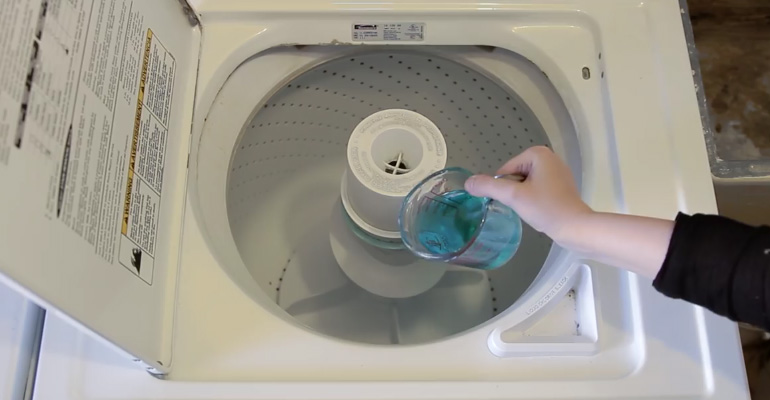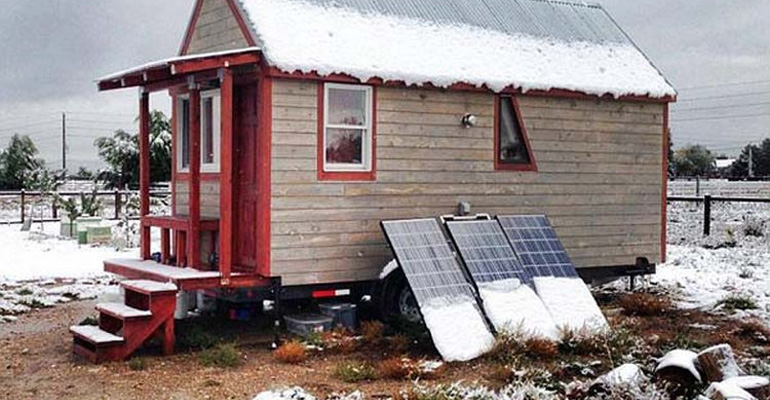Just as you’re getting ready to serve a terrific meal for your family or dinner guests, the oven breaks down while in the middle of cooking your turkey. Appliance breakdowns seem to happen at the worst times but with a little prevention and regular maintenance, we can minimize repairs and extend the life of all our appliances with some helpful cleaning tips.
The handy infographic at the end of this article is from eReplacementParts in partnership with Ghergich & Company. It offers cleaning tips and techniques for all your major appliances and small appliances like coffee makers, toasters, and blenders. Cleaning your appliances regularly also helps save money since dirty appliances generally don’t run as efficiently as they should resulting in higher operating costs and generally requiring more repairs.
A Squeaky Clean Guide to Cleaning Your Appliances
Increasing the lifespan of your appliances with appliance cleaning tips.
Major Appliance Cleaning Tips #1: How to Clean a Refrigerator
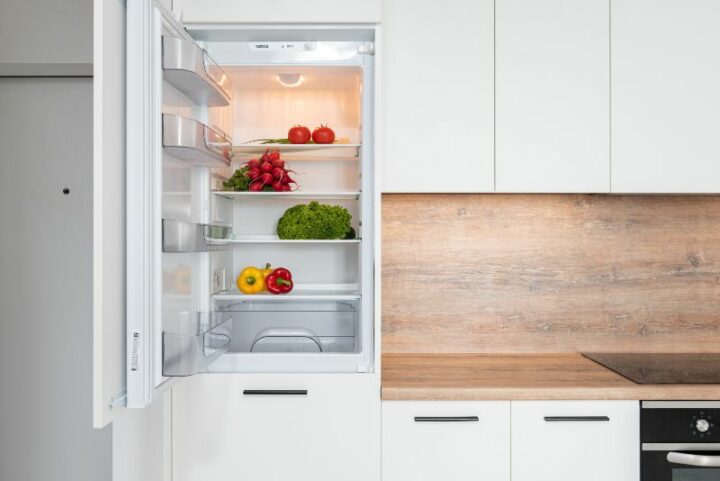
Average lifespan: 13 years.
What to do:
- Use a long-handled refrigerator coil brush or vacuum crevice tool to remove dust around the condenser coils.
- Clean underneath freestanding fridges.
- Dust on top of built-in fridges.
- With a damp cloth, wipe off door seals and gaskets.
Why?
- Dust around the coils makes the unit work harder, which can shorten its life.
- Dirty gaskets tear or stretch, letting cold air leak out.
Major Appliance Cleaning Tips #2: How to Clean a Dishwasher
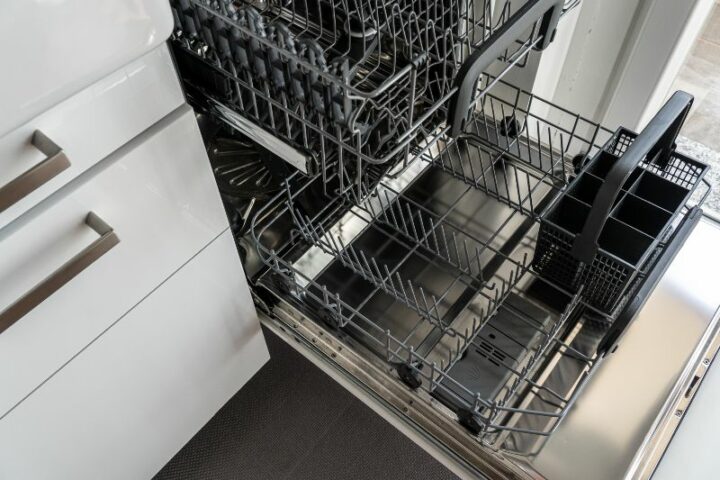
Average lifespan: 9 years.
What to do:
- Rinse food particles out of the removable filter.
- Touch up rusty/cracked prongs with a dishwasher rack repair kit.
- Wipe down door gaskets and frames.
- To remove stains, pour a Lemonade Kool-Aid packet into the detergent cup and run the empty dishwasher. The citric acid in the mix wipes out stains.
Why?
- Food particles will end up on clean dishes if the filter is clogged.
- Exposed rack prongs scratch dishes and glassware, and replacement racks aren’t cheap.
- Door gaskets that don’t seal can leak and create a mess.
Major Appliance Cleaning Tips #3: How to clean a Gas Stove Top

Average lifespan: 13 years.
What to do:
- Use a sewing needle, pin, or paper clip to poke through burner ports.
- Soak burner caps and rings with soapy water to remove residue.
Why:
- Spills can block gas burner ports, possibly preventing ignition.
Major Appliance Cleaning Tips #4: How to Clean a Microwave oven and Vent Hoods

Average lifespan: 9 years.
What to do:
- Wipe the interior and door seals with a damp cloth.
- Clean grease filters from the vent hood monthly by removing, soaking in soapy water, rinsing, drying, and replacing.
- Replace charcoal filters every 6-12 months.
Why:
- May run less efficiently due to food spills sticking to the interior.
- A clogged/dirty vent hood filter won’t get smoke and odors out of the kitchen.
Major Appliance Cleaning Tips #5: How to Clean a Washing Machine
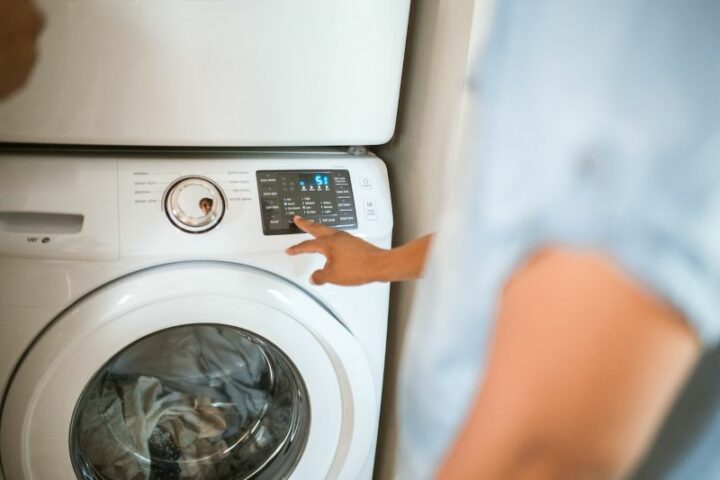
Average lifespan: 10 years.
What to do:
- Swap rubber drain hoses for braided stainless steel mesh.
- Wipe out the detergent dispenser drawer regularly with a damp cloth.
- Wipe the door gasket of front-load washers with a damp cloth.
Why?
- Rubber drain hoses can burst and cause water damage.
- A clean detergent drawer allows the right amount of detergent to flow during the wash cycle.
- Dry gaskets prevent mold and mildew from forming in the seals.
Major Appliance Cleaning Tips #6: How to Clean a Clothes Dryer
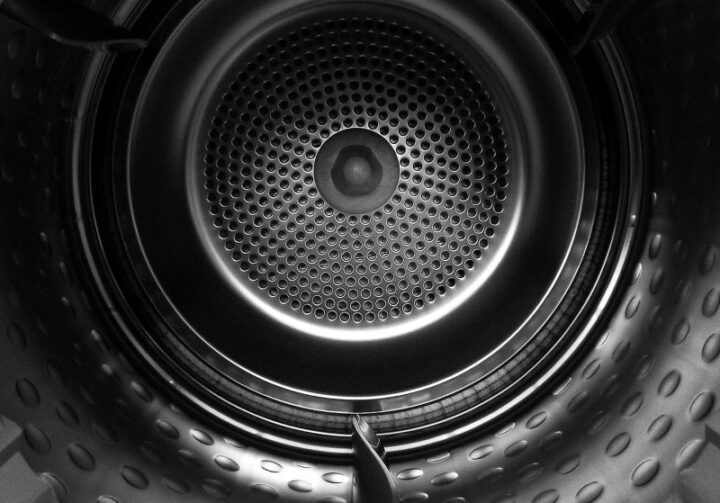
What to do:
- Clean the lint filter before and after each load.
- Replace flexible plastic or foil duct with a rigid or semi-rigid metal duct.
- Remove lint buildup in the duct with a vacuum.
- Regularly check the vent outside where the air exits the house for clogs or poor airflow.
Why?
- Reduced airflow from lint buildup reduces efficiency and may cause a fire.
- Flexible plastic or foil ducting is easily crushed, causing obstructions in airflow.
Major Appliance Cleaning Tips #7: How to Clean a Garbage Disposal
Average lifespan: 12 years.
What to do:
- Periodically grind up a few ice cubes.
- Use cold water when running the disposal and allow water to run for 1-2 minutes afterward.
Why?
- Ice cubes clear buildup.
- Cold water keeps fat and greases chunky, so it can be ground and washed away.
Cleaning Your Kitchen Gadgets and Small Appliances
How to Clean a Coffee Maker
Materials:
- Vinegar
- Water
Instructions:
- Fill the water reservoir with a mixture of half-distilled white vinegar and half water.
- Turn on the coffeemaker and let several cups run through.
- Turn it off and let sit for an hour.
- Turn it on again and complete the cycle.
- Run plain water through it a few times until the vinegar odor disappears.
How to Clean a Blender
Materials:
- Hot water
- Dish soap
Instructions:
- Fill the blender pitcher halfway with hot water.
- Add a drop of dish soap.
- Turn on the blender for 10 seconds.
- Rinse thoroughly with more hot water.
How to Clean a Toaster
Materials:
- Toaster
- Trash can
- Small pastry brush
- Warm soapy water
- Dry dish cloth
- Damp dish towel
- Vinegar (for stainless steel)
Instructions:
- Unplug the toaster and let it cool.
- Shake off loose crumbs from the crumb tray. If yours doesn’t have a tray, turn the toaster upside down and gently shake it.
- If the tray is still encrusted, wash it with warm soapy water until clean, then dry.
- Use a small pastry or basting brush to get into the difficult corners.
- Wipe the exterior and knobs with a damp cloth and gently soap.
- Use a bit of vinegar on a cloth to shine a stainless steel exterior.
- Replace crumb trays.
Most major appliances can last well over a decade or more so it makes sense to clean them regularly and have them working efficiently. It can lower your energy bill and save you money!
Pin it for later!

H/t: eReplacementParts
Please share these important appliance cleaning tips for appliances with your friends and family.

